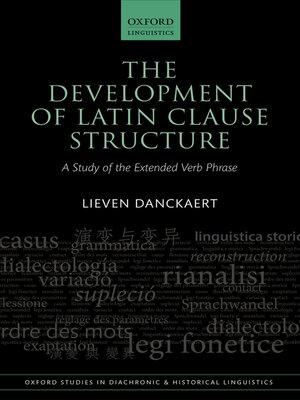The Development of Latin Clause Structure
ebook ∣ A Study of the Extended Verb Phrase · Oxford Studies in Diachronic and Historical Linguistics
By Lieven Danckaert

Sign up to save your library
With an OverDrive account, you can save your favorite libraries for at-a-glance information about availability. Find out more about OverDrive accounts.
Find this title in Libby, the library reading app by OverDrive.



Search for a digital library with this title
Title found at these libraries:
| Library Name | Distance |
|---|---|
| Loading... |
This book examines Latin word order, and in particular the relative ordering of i) lexical verbs and direct objects (OV vs VO) and ii) auxiliaries and non-finite verbs (VAux vs AuxV). In Latin these elements can freely be ordered with respect to each other, whereas the present-day Romance languages only allow for the head-initial orders VO and AuxV. Lieven Danckaert offers a detailed, corpus-based description of these two word order alternations, focusing on their diachronic development in the period from c. 200 BC until 600 AD. The corpus data reveal that some received wisdom needs to be reconsidered: there is in fact no evidence for any major increase in productivity of the order VO during the eight centuries under investigation, and the order AuxV only becomes more frequent in clauses with a modal verb and an infinitive, not in clauses with a BE-auxiliary and a past participle. The book also explores a more fundamental question about Latin syntax, namely whether or not the language is configurational, in the sense that a phrase structure grammar (with 'higher-order constituents' such as verb phrases) is needed to describe and analyse Latin word order patterns. Four pieces of evidence are presented that suggest that Latin is indeed a fully configurational language, despite its high degree of word order flexibility. Specifically, it is shown that there is ample evidence for the existence of a verb phrase constituent. The book thus contributes to the ongoing debate regarding the status of configurationality as a language universal.







